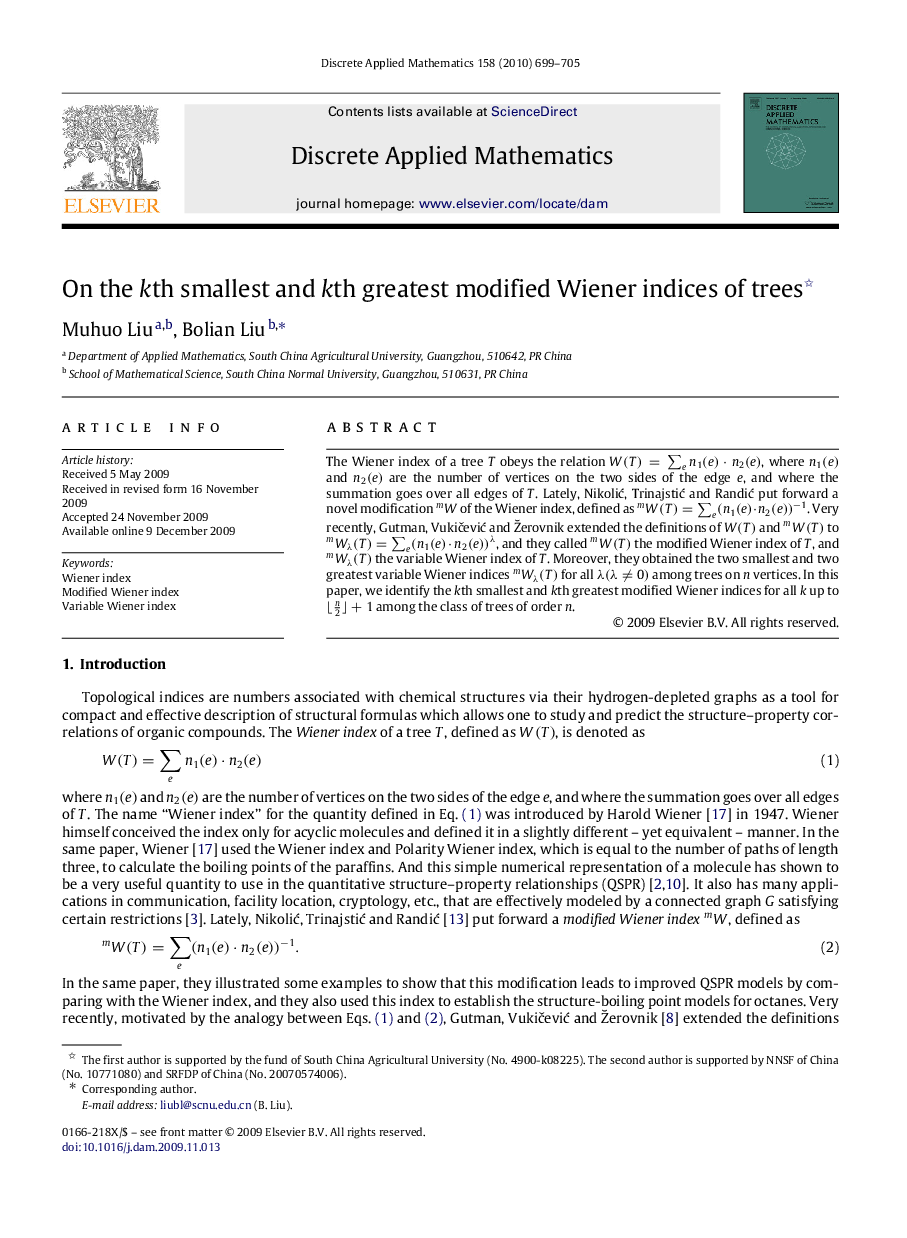| Article ID | Journal | Published Year | Pages | File Type |
|---|---|---|---|---|
| 420436 | Discrete Applied Mathematics | 2010 | 7 Pages |
The Wiener index of a tree TT obeys the relation W(T)=∑en1(e)⋅n2(e)W(T)=∑en1(e)⋅n2(e), where n1(e)n1(e) and n2(e)n2(e) are the number of vertices on the two sides of the edge ee, and where the summation goes over all edges of TT. Lately, Nikolić, Trinajstić and Randić put forward a novel modification mWmW of the Wiener index, defined as mW(T)=∑e(n1(e)⋅n2(e))−1mW(T)=∑e(n1(e)⋅n2(e))−1. Very recently, Gutman, Vukičević and Z˘erovnik extended the definitions of W(T)W(T) and mW(T)mW(T) to mWλ(T)=∑e(n1(e)⋅n2(e))λmWλ(T)=∑e(n1(e)⋅n2(e))λ, and they called mW(T)mW(T) the modified Wiener index of TT, and mWλ(T)mWλ(T) the variable Wiener index of TT. Moreover, they obtained the two smallest and two greatest variable Wiener indices mWλ(T)mWλ(T) for all λ(λ≠0)λ(λ≠0) among trees on nn vertices. In this paper, we identify the kkth smallest and kkth greatest modified Wiener indices for all kk up to ⌊n2⌋+1 among the class of trees of order nn.
